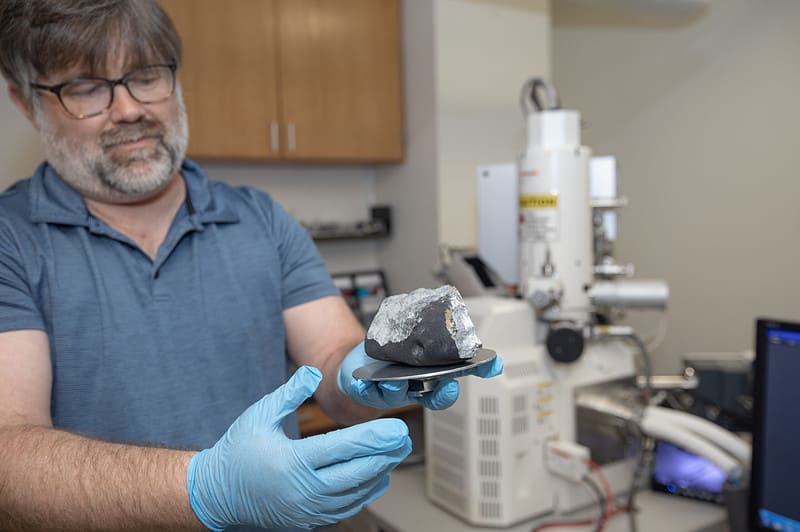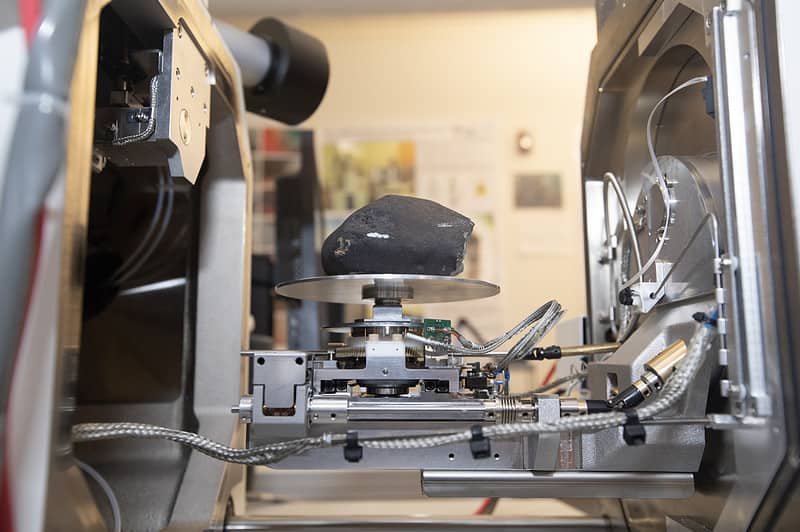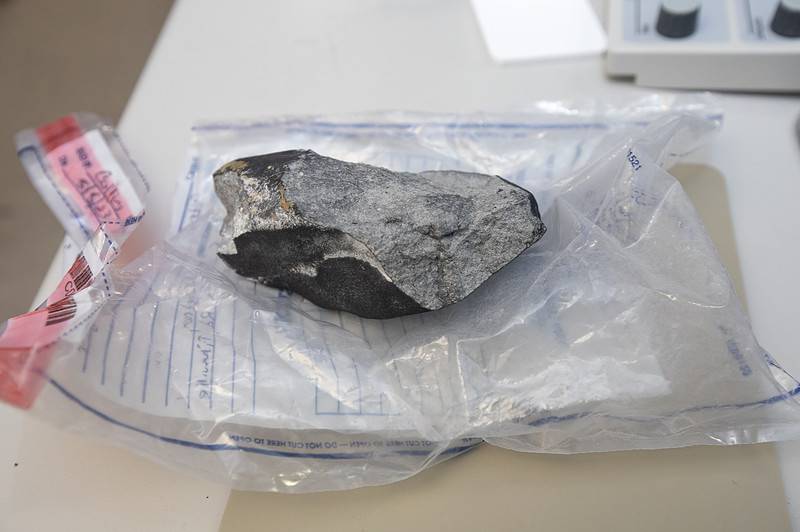Scientists say object that landed in Hopewell was a meteorite

The chairman of the physics department at The College of New Jersey has confirmed that the object that went through a roof in Hopewell Township and landed on the floor this week is indeed a meteorite.
Based on visual examination, density measurements, scanning electron microscope images, and examination and input from retired meteorite expert Jerry Delaney of Rutgers University, scientists at The College of New Jersey have confirmed that the object is a stony chondrite meteorite. They say it is most likely type LL-6, which means that it is lower in iron than most chondrite meteorites, and has been highly metamorphosed by intense heat, even before entering the Earth’s atmosphere.
“Getting the chance to examine the meteorite yesterday was a rare and thrilling opportunity for me, as well as for a group of physics students and professors at TCNJ,” said Nathan Magee, chair of TCNJ’s physics department. “We are excited to be able to confirm that the object is a true chondrite meteorite, in excellent condition, and one of a very small number of similar witnessed chondrite falls known to science.”
The meteorite is likely to be named based on the nearest postal address, thus likely to be officially dubbed the “Titusville, NJ” meteorite.
The best estimate of landing time is about 12:14 p.m. on Monday, May 8. The homeowner said the meteorite was still warm when she found it at about 12:35 p.m. Several reports of streaks in the sky and loud noises appear to match the timing estimate.
The meteorite weighs 2.2 pounds. Scientists said the density of the meteorite is in the usual range for chondrite meteorites and is significantly greater than most crustal rocks on the Earth.
About 1,100 LL chondrites have ever been found and are known to science, experts say. About 100 were “witnessed falls.”
Experts say the parent-body asteroid origin of LL chondrites is not yet known precisely, but it is understood that these are objects from the main asteroid belt, with an age of approximately 4.56 billion years, which is fairly close to the formation age of the sun and Earth, and older than any dated rock on Earth.
Additional measurements could establish mineral composition more precisely, and confirm or perhaps change the preliminary LL chondrite classification. Experts say advanced isotopic analysis could be done elsewhere to establish more precise ages of the mineral components and perhaps provide more information on the trajectory and timeline of travel from the asteroid belt toward Earth.



